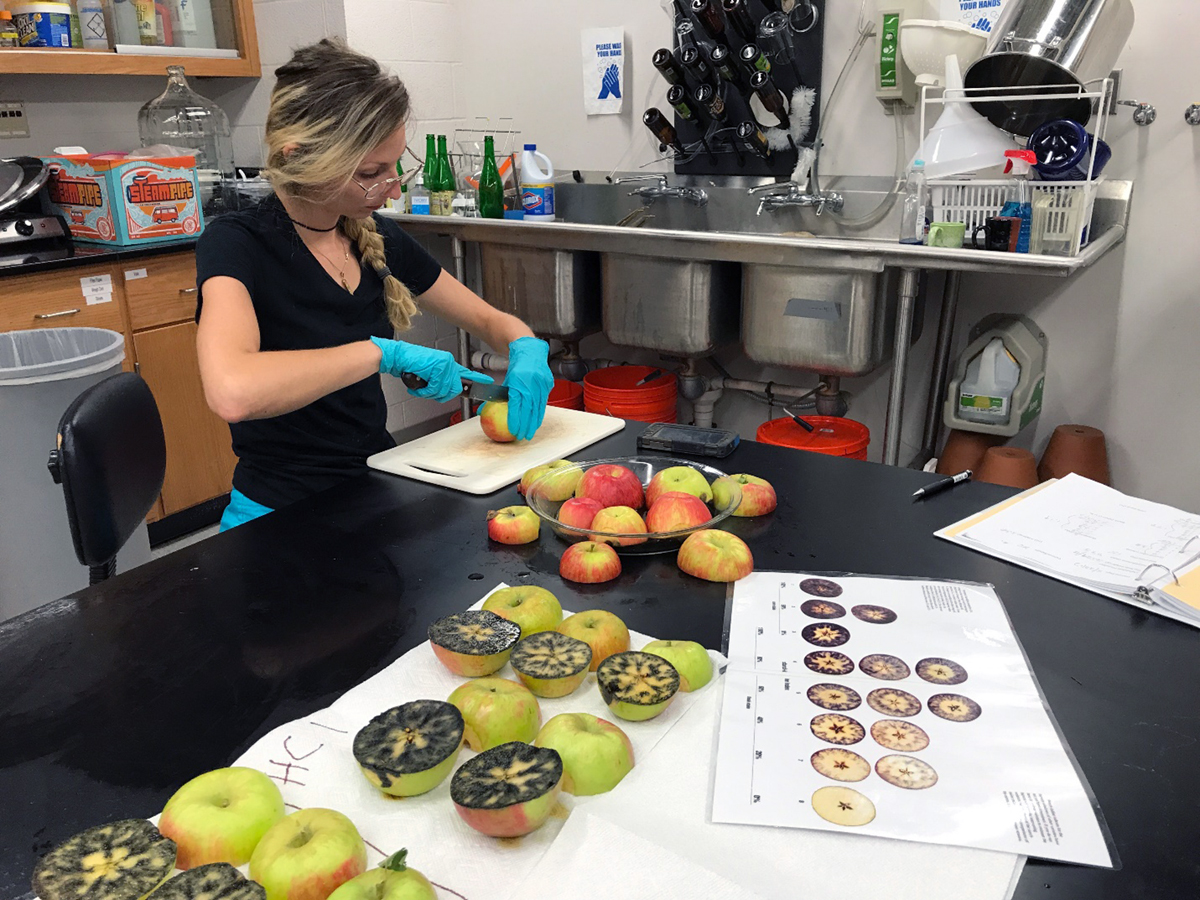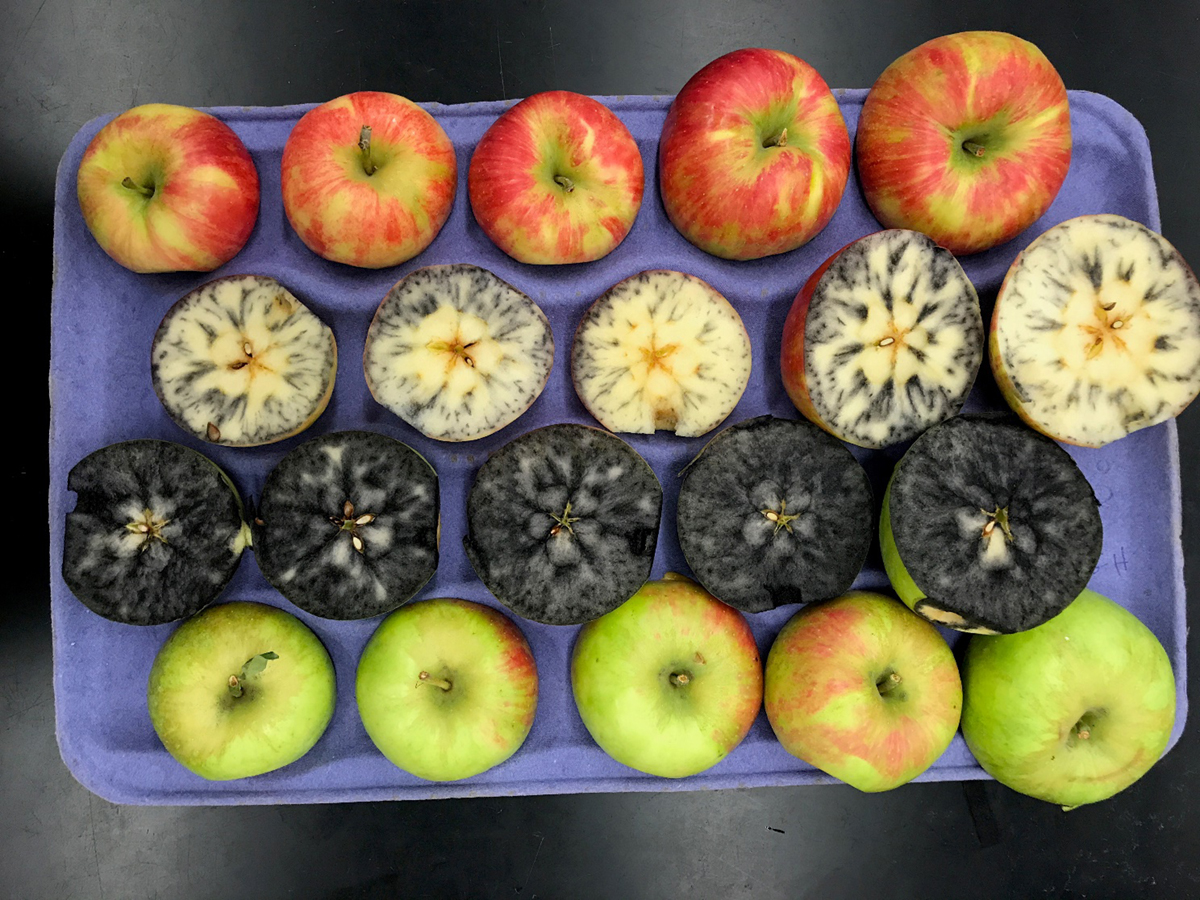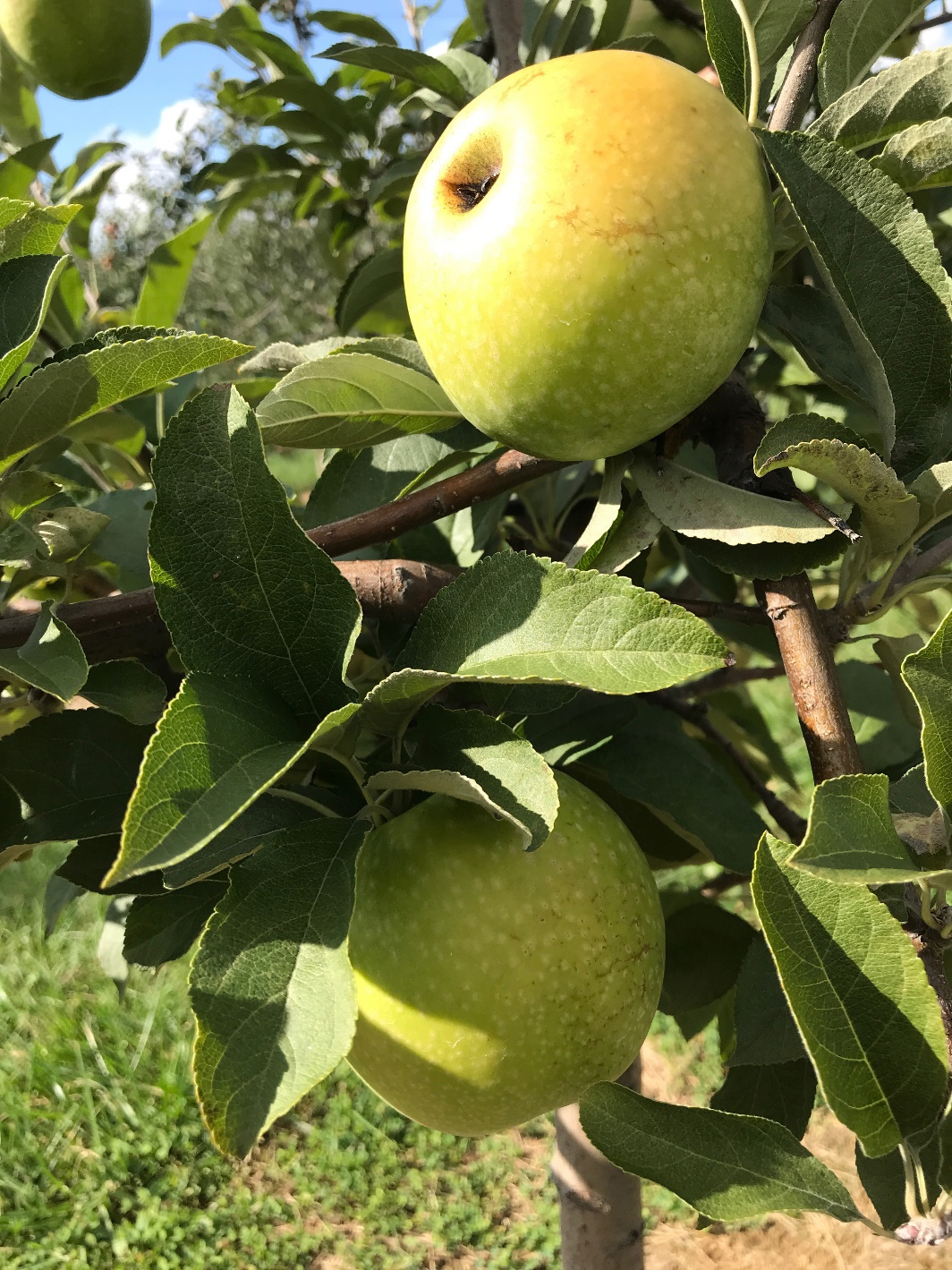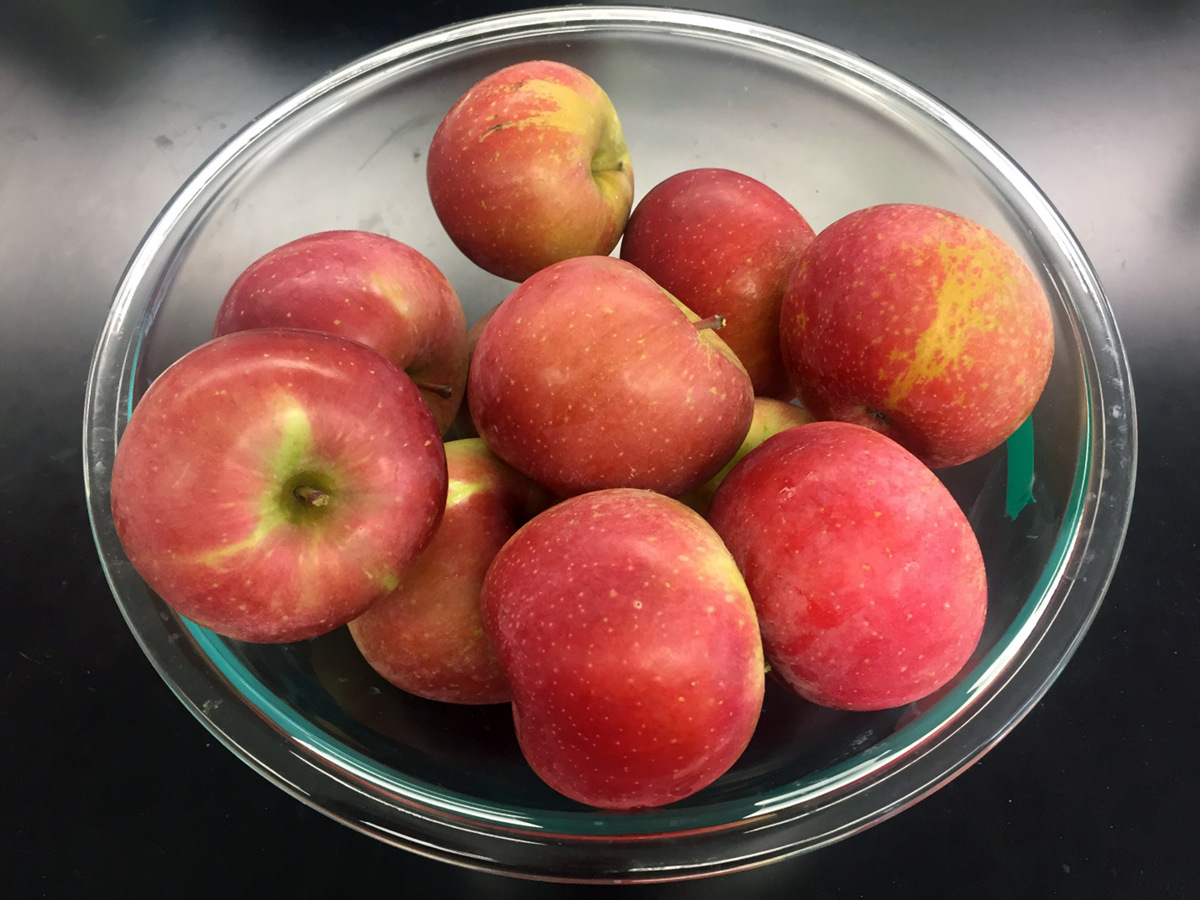In response to an early bloom, wet spring and dry summer, apples matured earlier than normal in 2017.
The early bloom affected early and mid-season cultivars much more dramatically than late-season fruit. With the planting of new cultivars in high-density tall spindle systems, apple harvest has become a three-month deal in the mid-Atlantic region. After beginning in early August, picking stretched until early November, when record cold temperatures ended the harvest period.
Ten points stood out during our 2017 apple maturity studies
- Premier Honeycrisp fruit had good size and quality, despite maturing more than two weeks ahead of Honeycrisp. These fruit matured and began to drop in early-August, prior to the arrival of picking crews.
- Gala fruit matured early and ripened quickly in response to the early bloom and summer heat. By mid-August, many Gala fruit had begun to lose starch and show small stem-end cracks.
- Despite the heat, Buckeye Gala fruit sampled had remarkably good red color development in mid-August. Gala fruit also had low seed counts, likely causing smaller fruit size.
- Untreated Gala fruit again moved from immature to overripe in about 10 days.
- Daybreak Fuji fruit responded dramatically to this year's weather. While Daybreak Fuji were tree-ripe on September 20, 2016, they were harvested two weeks earlier in 2017.
- CrimsonCrisp apples had good red color, but remained quite firm in September. We again observed that they did not seem as 'crisp' as Honeycrisp. While CrimsonCrisp developed watercore in 2016, we did not observe significant water core this year.
- Aztec Fuji fruit were poorly colored but already edible in early October. Since Fuji is not prone to pre-harvest drop, they continued to improve in quality and eventually reached 16° Brix in late-October.
- Fuji and Granny Smith apples grown on tall-spindle plantings had considerable sunburn damage. A cool period in early October enhanced red color development in both cultivars. While the red color development masked the sunburn damage in Granny Smith, it was not as effective in masking that damage in Aztec Fuji.
- Cripps Pink apples were slower to mature and develop red color than expected. The unseasonably warm dry September weather delayed red color development and slowed the increase in soluble solids. Once temperatures dipped below 50° F in early October, quality improved significantly and spot-picking began.
- Cripps Pink harvest ended the second week of November when an extremely cold weekend, marked by a black frost in some locations, damaged any Cripps fruit remaining on the trees.

Audra Bissett, an undergraduate working on the project cutting Premier HoneyCrisp for starch staining. To measure the starch pattern index, fruit are cut at the equator and then dipped into a brown-colored solution of iodine/potassium iodide for one minute. About five minutes after taking the apples out of the solution, the blue staining pattern is rated using the Cornell Starch Chart. Photo: Chris Walsh, University of Maryland

Fruit color and starch staining pattern of representative samples of Premier Honeycrisp (top) and Honeycrisp (bottom) fruit harvested on August 9, 2017 in Adams County. This variable starch staining pattern in the Premier Honeycrisp apples was typical of the spot-picked fruit sampled. Photo: Kathy Hunt, University of Maryland

Sunburn development on the sunny side of Granny Smith (top) compared to the shaded fruit on the bottom. Fruit were photographed on tall-spindle trees on M.9 Nic29 rootstock during the second week of October, 2017. Photo: Kathy Hunt, University of Maryland

On October 20, 2017 we sampled Aztec Fuji grown in Maryland. While fruit were tree ripe, their red color was not intense. Some fruit also had russet on the peel, likely caused by cool wet weather after bloom. Photo: Chris Walsh, University of Maryland
Acknowledgments
The project is supported by the State Horticultural Association of Pennsylvania Research Committee and is a cooperative effort of the University of Maryland Extension and Penn State Extension.

